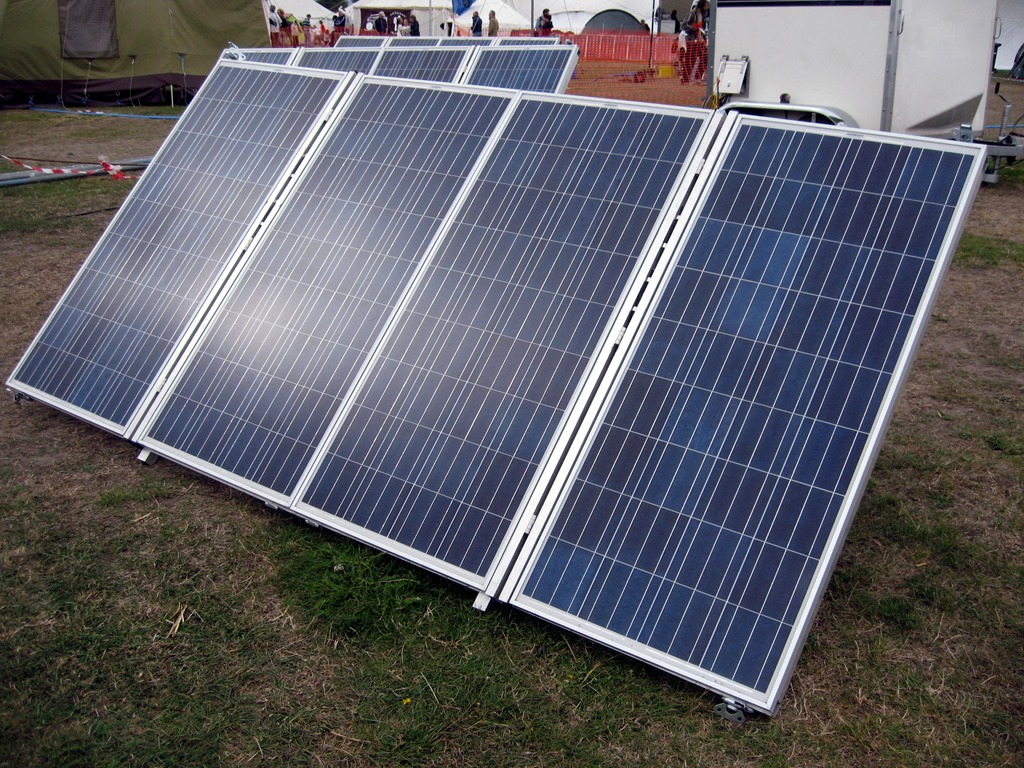Scientists from Egypt’s Benha University have proposed an active cooling technique for PV panels based on the use of water and a mixture of aluminum oxide (Al2O3) and phase change material calcium chloride hexahydrate (CaCl2H12O6). Phase change materials (PCMs) – compounds which can store thermal energy and help stabilize temperature – can absorb or release large amounts of ‘latent’ heat when they go through a change in their physical state, such as during melting and freezing.
The Benha research team applied various mixtures of their active coolants to a 50 W polycrystalline PV panel and compared performance during summer months in Cairo with that of an untreated panel.
The system involved the use of cooling unit, DC pump, valves, water flow meter and connecting pipes. Aluminum channels were fabricated for the water and the Al2O3/PCM mixture. The channels were placed under the two panels, which were south adjusted and oriented 30 degrees from horizontal.
Technique
The PCM mixture was heated to melting point to form a liquid and Al2O3 nanoparticles were added to it in the aluminum channels. “The dispersion of particles in the PCM liquid is done using an agitator bath with four different mass concentrations,” the group stated.
The researchers recorded PV current and voltage, front and rear panel surface temperatures, water inlet and outlet temperatures, solar irradiation, ambient air-dry bulb temperature and wind speed.
“Applying the cooling system, whether using water and/or [the] Al2O3/PCM mixture provides a noticeable drop in cell temperature compared with the uncooled [panel],” said the Egyptian team.
The researchers said a mixture of water and the Al2O3/PCM liquid outperformed the use of water alone and the best performance was recorded from 75% water and 25% Al2O3/PCM.
Water use
Although use of the Al2O3/PCM mixture alone did not produce the best results, removing the need for water for coolant purposes might be the optimal solution for solar installations, the researchers suggested.
The research findings are presented in the paper Performance enhancement of the photovoltaic cells using Al2O3/PCM mixture and/or water cooling-techniques, published in Renewable Energy and on the ScienceDirect website.
A similar technique, using CaCl2.6H2O–Fe3Cl2.6H2O eutectic as a phase change material, was recently proposed by scientists from India’s KPR Institute of Engineering and Technology and the National Engineering College.
This copy was amended on 08/05/20 to indicate the panel to which the coolant mixtures were applied had a 50 W power rating, not 50 kW, as previously reported. The copy was also changed on 08/05 and 11/05 to indicate the cooling method used was an active technique, not a passive one as previously reported.
This content is protected by copyright and may not be reused. If you want to cooperate with us and would like to reuse some of our content, please contact: editors@pv-magazine.com.




It was obviously not a 50 kW panel?!
Here in the Pacific and New Zealand, we have used solar swimming pool strip glued to the back of the panels for 20 years. Why waste the heat in the name of so called efficiency? What’s more efficient than using the heat rejected to heat water powered by a PV powered pump so it automatically speeds up or slows down in proportion to the input, (use an ATA Mini -Maximiser to increase startup torque if required) thus providing a thermostatic effect maintaining the panel temperature.
Alternatively, use a non return valve or pulse-flow valve to maximise the EPDM strips elasticity to self-pump the water with no other pump at all required. The valves shut causing the strip to reach a certain elastic pressure from the 3% water expansion. The output valve trips open and sends the plug of hot water down the pipe like a water ram, the input valve opens and the process repeats all day.
Hi Bob,
You’ve got us bang to rights there, the panel referred to was, not surprisingly, a 50 W device. The copy will be amended forthwith. In terms of your suggested alternative system, I will open that up to suggestions among our online pv magazine community.
The cooling effect of PV modules in very hot areas is understandable.
The question of using or mixing Nano particles on modules is of significant importance.
A deep finding and publication is of dire necessity on 2 following counts.
1. Effect of Nano particles on human contact through regular manual cleaning operations.
2. Whether variable temperatures or rainfall water drainage from Solar modules would have any effect of humans and the neighboring cultivated crops.
3. Does this leak WOULD have any health hazard as well as mutational effect on humans and plants.
This is an important issue with the coating of Nano particles on Solar modules.
What is the point of the paper and this reporting if it does not tell us what % did the power of the panel increase with cooling, and at what temperatures?
Neither does it say whether the cooling system is a static or a passive flow system, as water is being used. Poorly written article.